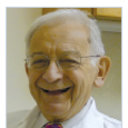Biologic and pharmacologic effects of harringtonine on human leukemia-lymphoma cells.
Raktažodžiai
Santrauka
Ten human leukemia-lymphoma cell lines were tested for the growth-inhibitory effects of harringtonine (HT). HT was most active against HL-60 acute promyelocytic leukemia cells and least active against DND-41 acute lymphoblastic leukemia cells, with a 70-fold differential activity. Sensitivity of the cell lines is, in decreasing order: HL-60 greater than RPMI-8402 greater than DND-39A congruent to ML-2 congruent to MOLT-3 congruent to KG-1 greater than Daudi congruent to NALL-1 greater than BALM-2 greater than DND-41. The cell lines with rapid cell growth tended to be more sensitive to HT. To further elucidate the selectivity of the differential sensitivity, uptake and release of HT were compared in HL-60 and DND-41 cells. Uptake of [3H]HT into HL-60 and DND-41 cells showed no difference; however, the binding of [3H]HT to cellular components was greater than 16-fold higher in HL-60 cells than DND-41 cells. There were also minor, but significant differences in the inhibition of [3H]leucine incorporation into proteins of these two cell lines in the presence of 1 microgram/ml HT. To test whether the biological effects of HT are related to the concentration of, or exposure time to, HT, KG-1 cells were exposed to HT for different periods of time and the growth-inhibitory effects were compared. Increasing exposure time from 1 h to 3 h resulted in a 100-fold decrease in concentration X exposure time (c X t) at ID50; from 3 h to 6 h, in a 20-fold decrease at ID70; and from 6 h to 24 h, in a 16-fold decrease at ID90. HT was not inactivated by cells up to 24 h. These results indicate that (a) the sensitivity of different cell lines to HT may be related to the degree of HT binding; and (b) the effects of HT are more dependent on exposure time than concentration. Continuous infusion is thus rational for clinical trials of this drug, and the degree of HT binding to leukemic cells may be predictive of clinical response.


